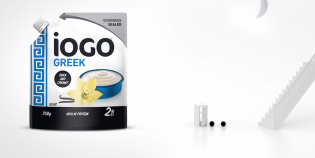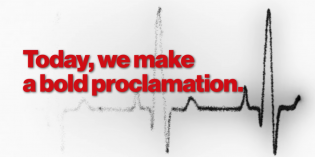People in this business seem to love “killing” things, whether it’s advocating the death of TV or, as one agency did this week, marking the end of advertising, complete with a funeral. Here’s a proposal: Let’s kill something that actually deserves to die and retire the phrase “above the line” for good.
Admittedly, it will not be easy. A quick search of Ad Age‘s online archive finds 152 uses of the phrase over 18 years, indicating how long adland has propagated this outdated – if not outright damaging – way of looking at our industry.
As readers know, “above the line” traditionally refers to broadcasted mass media, while “below the line” refers to more targeted and measurable channels. Incremental changes in “above-the-line” agency relationships are the subject of utter fascination in our business, and yet wholesale changes in “below-the-line” practices or relationships still hardly register in the trades, blogs or even agency gossip mills.
In a less connected and tech-enabled world, this made some sense. Ad agencies were paid on percentages of media buys that dominated their clients’ budgets, and their output represented the bulk of those clients’ attempts to engage their customers.
But today this fixation is as lazy as it is meaningless. Effective marketing no longer occurs above or below the line and effective marketers recognize that there is no line. Look at Starbucks, a ubiquitous and wildly successful brand that has wielded loyalty, mobile, social and in-store programs with far more potency and effectiveness than it has broadcast channels. Or consider how our client Target has leveraged TV-quality shoppable video to create a more engaging and effective e-commerce experience.
These are brand-building, needle-moving actions from some of the world’s most-admired marketers, and they received less attention than incremental changes in conventional and dubiously effective TV ads from lower-profile players.
One reason this behavior continues is that, while consumers no longer see lines, many companies still do. Marketers remain siloed, with budgets tied up in various power centers that obstruct real integration.
Earlier this year, we were involved in the final round of two pitches for the same client at the same time in different disciplines. We could have easily merged the pitches together into a cohesive and seamless whole, but the client objected. The line was still quite real in their organization.
That’s frustrating. But it is also temporary.
Every day, consumers demonstrate that the line no longer exists by tweeting on their phones while watching live-event TV, or engaging mobile apps at the point of sale. Today, the notion of a line is an outdated cliche in our industry that only serves one purpose for marketers: to trip them up.
Kevin DiLorenzo is CEO at Minneapolis-based Olson, an agency built for a multi-channel world with specialties in creative, digital, loyalty, public relations and mobile … or everything that used to be called above and below the line.
To read the original article in Advertising Age, click here.










